We had such a good time on my birthday field trip to Barcelona: a stop at our favorite noodle shop, an American-style cookie for dessert, and then a visit to the Museum of Contemporary Art (MOCO.)
But before that, even, I had a thought when we visited the Guggenheim Bilbao: museums designed and built in the contemporary era tend to be more intimate, targeted, and sensible. Wandering endlessly through different styles and periods of history is overload. Standing in line for half an hour for a chance at a 15-second full-frontal with Mona Lisa is not my idea of culture. Sorry, Louvre, you’re just a little too-too.
Maybe curators realized that, like me, most people have a hard time processing too much visual information, especially in crowds—an hour, hour and a half, tops, and I’m fried. Allowing pictures (no flash please) also helps enormously. The Guggenheim was just right: a big special exhibit on Yayoi Kusama, a smattering from the permanent collection, and done.
I’ve had my eye on MOCO Barcelona since I visited the Picasso Museum back in March; the two are next door to each other in the El Born neighborhood, and the noodles/cookie/museum format really tickled my pink then, enough for a repeat with the hubs. We were in and out in an hour, and had plenty to talk about and pictures for reference afterward.
I get such a kick out of contemporary art in so many ways, not the least in some of the things the artists themselves say about their own art. For example:
Yes, yes—“communication”—“grafiti” of course, as one does—but “dialogue”—seriously? Just to be clear, I LOVE the giant Smurfbot in the front courtyard. But sometimes I choke on the buzzwords we throw around—Art Speak, let’s call it, cohort to Book Blurb Speak—and what they really mean (if anything.)
Sometimes I like to take these to their logical yet absurd conclusions.
MTF: Hey KAWS! Let’s “dialogue,” man.
KAWS: Cool, cat. Go!
MTF: I really love that big freaky wood squeak toy out front, so cute!
KAWS: Um, yes, it’s a juxtaposition of mass production and uniqueness…
MTF: If you say so. But that Snoopy chair, now that’s just stupid.
KAWS: Well…
MTF: Yeah, and it’s dingy, not your whitest whites, I mean, it must get really dusty—hard to clean, no? Can you take them apart and run them through the washing machine? Are Snoopys bleachable?
KAWS: Wait—
MTF: Probably not, maybe some Clorox 2 or something. Did you include Care and Cleaning instructions for collectors? I didn’t see a tag.
KAWS: This isn’t the kind of dialogue I meant…
MTF: Oh. Well, you tell me what to say—although, that’s kinda more monologuing, right? Are you sure wanted a dialogue, or were you just pulling that one out of your—
KAWS: Just go.
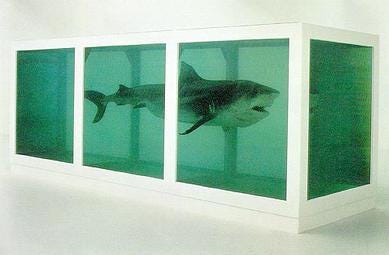
Once inside MOCO, the horror spectacle of Damien Hirst—the artist best known for the tiger shark preserved in formaldehyde—is front and center.
Here we are presented with an actual organic representation of the sacred heart motif, and while grotesquely beautiful, it showed me that not only is there a need for art which spares us the actual embodiment of the ideas with which we ritually enact our spiritual iconographies, conversely, there is also a place for art which grimly manifests the imaginary motifs we oh-so-innocently conjure.
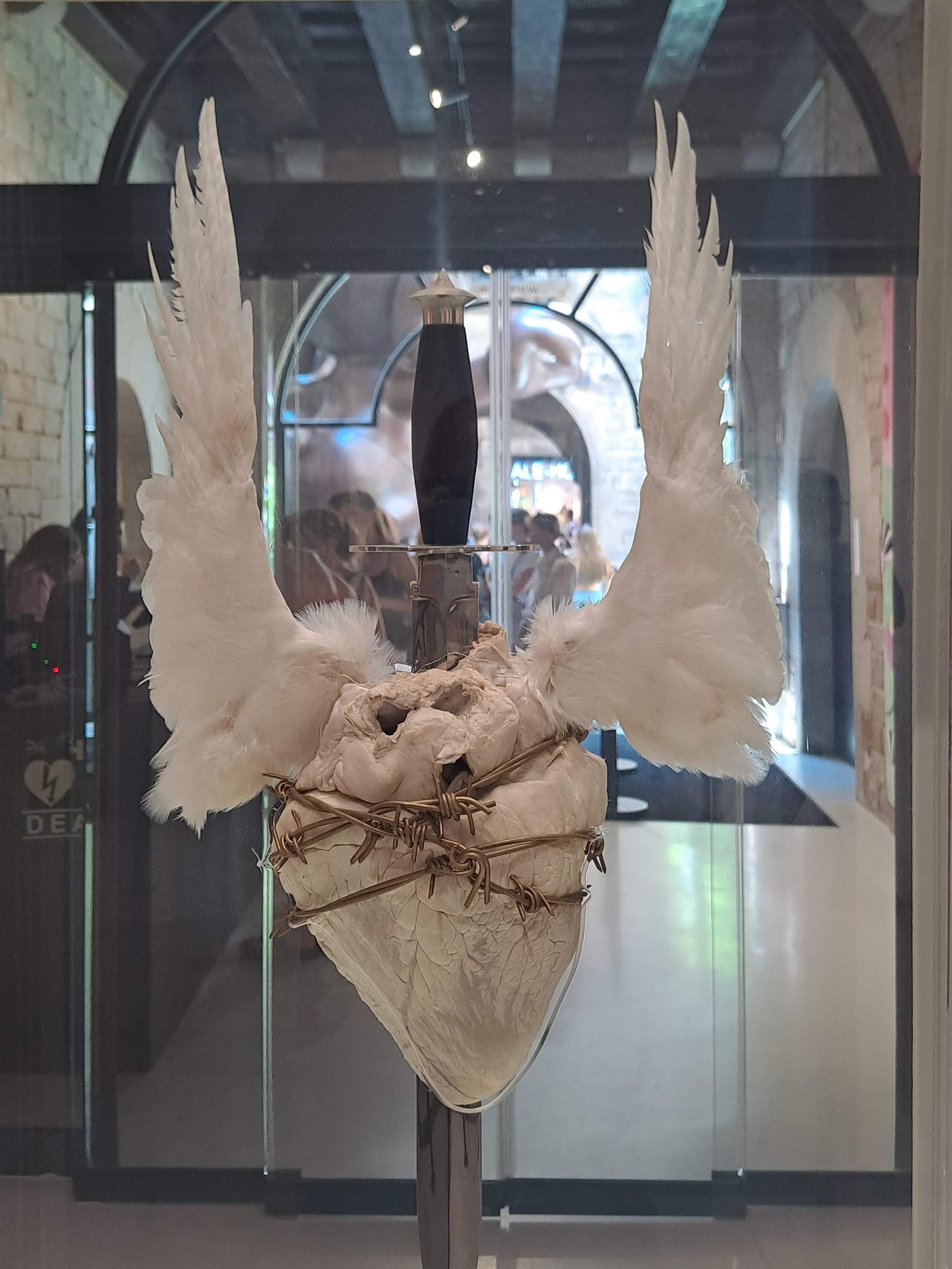
It’s all very “get famous or die trying,” and so now, of course, the Crown Prince of Viscera has boldly plunged into the world of NFTs. With his 2021 The Currency project, Hirst produced 10,000 paintings on paper, each attached to an NFT, and within two months sold $25,000,000 worth.
(MOCO had a whole side gallery devoted to NFTs; that’s how I started down this rabbit hole in the first place.)
It’s surprising Hirst bothered to produce physical work at all, because NFTs usually involve digital assets—videos, art, images, memes, even a tweet; Twitter X’s Jack Dorsey converted his first tweet ever into an NFT and sold it for $2.9 million.
The NFT corresponding to this image sold at Sotheby’s for $69 MILLION back in 2021. Actually, it sold for 42,329 Ether, which today is worth $78 million.
Back to Hirst: I’m going to say his reasoning for the tangible rather than purely digital production of The Currency was the ongoing publicity surrounding the dispensation of the physical paintings; buyers of each unique piece could either keep the NFT, or exchange it for the physical painting within one year, after which the un-exchanged paintings would be ceremonially burned, permanently converting the work into a purely digital-based entity and dragging this amusing charade out over a year’s time.
DH: “This project is firstly about art and people, but it explores belief and value generally, and in particular value in art.”
MTF: So basically you created a bunch of super simple and easy to make “art” and then sold it to a bunch of “people” and while many can’t “believe” these have any actual “value,” obviously they must because those other people paid a “particular” price for this crap, and by your reckoning, “value in art” essentially boils down to whether and how much some sucker will pay for it?
DH: Precisely.
I had been baffled by this whole NFT thing until I sat down after MOCO and started thinking about Damien and art and value and all that.
Surely this is a capitalist ploy to remove actual art from the whole question of artistic value—just strip it away altogether, who needs it?—and monetize the process of providing authentication for difficult to authenticate things, right?
When anything can be valuable, is anything valuable? NFT EtherRock versions of this clipart have reportedly sold for as much as $500,000.
Google “What makes an NFT valuable?” and it spits out legalese locating the value largely in ownership and authenticity—authentication of an intangible asset is irrefutably guaranteed by recording it on a blockchain, and can then be sold as an irreplaceable (non-fungible) article. Or something.
At first I thought, well, this just sounds like a fancy new way to colonize copyrighting, but apparently, one can sell an NFT and retain the copyright, just as an artist can sell a painting to a collector, but retain the right to reproduce and license the image depicted in the painting.
So who cares about owning an insubstantial, intangible, digital no-thing? Is it all just another way to scream “me, Me, ME-MINE!” into the void?? By all accounts, this very Substack post has over $70 million worth of digital nonsense encrusted within it—am I going to jail for grand larceny???
Well, obviously, I don’t have any answers—you weren’t expecting me to reach some kind of magnificent conclusion, I hope.
What does Ford Know? Less and less all the time.
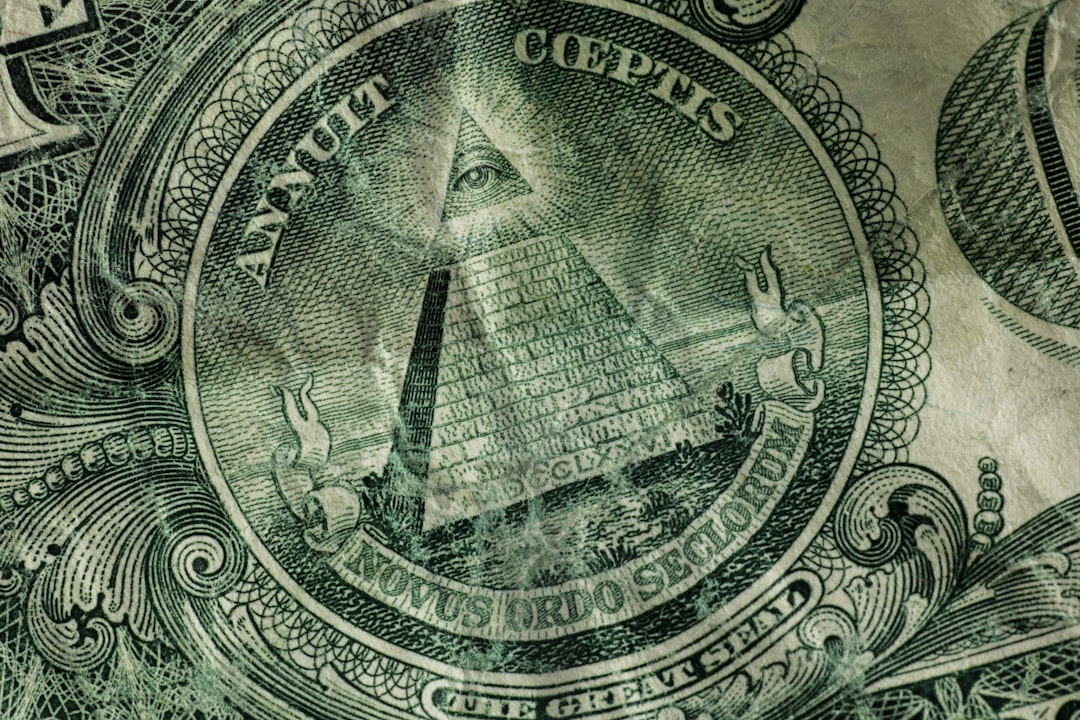
Really, an NFT “worth” millions of dollars seems no more insane than exchanging pieces of printed paper for tangible goods like diamonds and hot dogs—
or transferring digital numbers in their 100s of millions from one account to another for a canvas square daubed with paint—
or a painting selling for $24MM more three years after it was famously vandalized by its own artist in a publicity stunt—who ever heard of something becoming more valuable after it was destroyed?
If destruction has value, Oppenheimer am become the wealthiest man who ever lived.
I get it, I do—crypto and NFTs are uncharted territory; values fluctuate wildly; fortunes are made and lost in the blink of an eye—it’s new, it’s weird!
But I suppose there is value in it, when you examine the concepts—certainly lawyers and brokers are already grabbing their share—and a generation from now, tweets and rocks will be seen as the early test cases of an emergent economy.
Yes, it can be very hard to wrap our heads around these new technologies sometimes—blockchains, NFTs, metaverses, artificial intelligentsia. Fame itself—on an internationally televised scale—has existed for less than 100 years; web-famous less than 30.
Eventually, someone will say, “You’re the guy who bought the NFT of what’s-his-name’s first whichamajig! You’re famous! What was your name again?” and he will be well pleased.
I imagine a day when we primarily live out our lives in digital holo-bubbles, breakfasting in Venusian bistros in the morning, working the 9-to-Noon grind as Temporal Navigators1 (tours to Ancient Rome, Greece, Egypt, or late-Jurassic leaving thrice hourly) before heading home to virtual suburbs in the Andromeda galaxy, maybe a little afternoon neuro-gaming2 sesh with the Mx. before a romantic little dinner at Galadriel’s Grotto (the lembas is to die for.)
Someday, virtual, fantasy, and real will be as emulsified as a good vinaigrette, and NFTs will be as common as croutons.
Certainly there will be the contingent of people who refuse to join the stampede into the metaverse, latter-day Luddites, neo-Amish driving themselves around in electric cars—by hand. On Earth! LIKE SAVAGES!
Possibly, I may be among them.

Futuristic avocation courtesy of ChapGPT.
ibid 1.



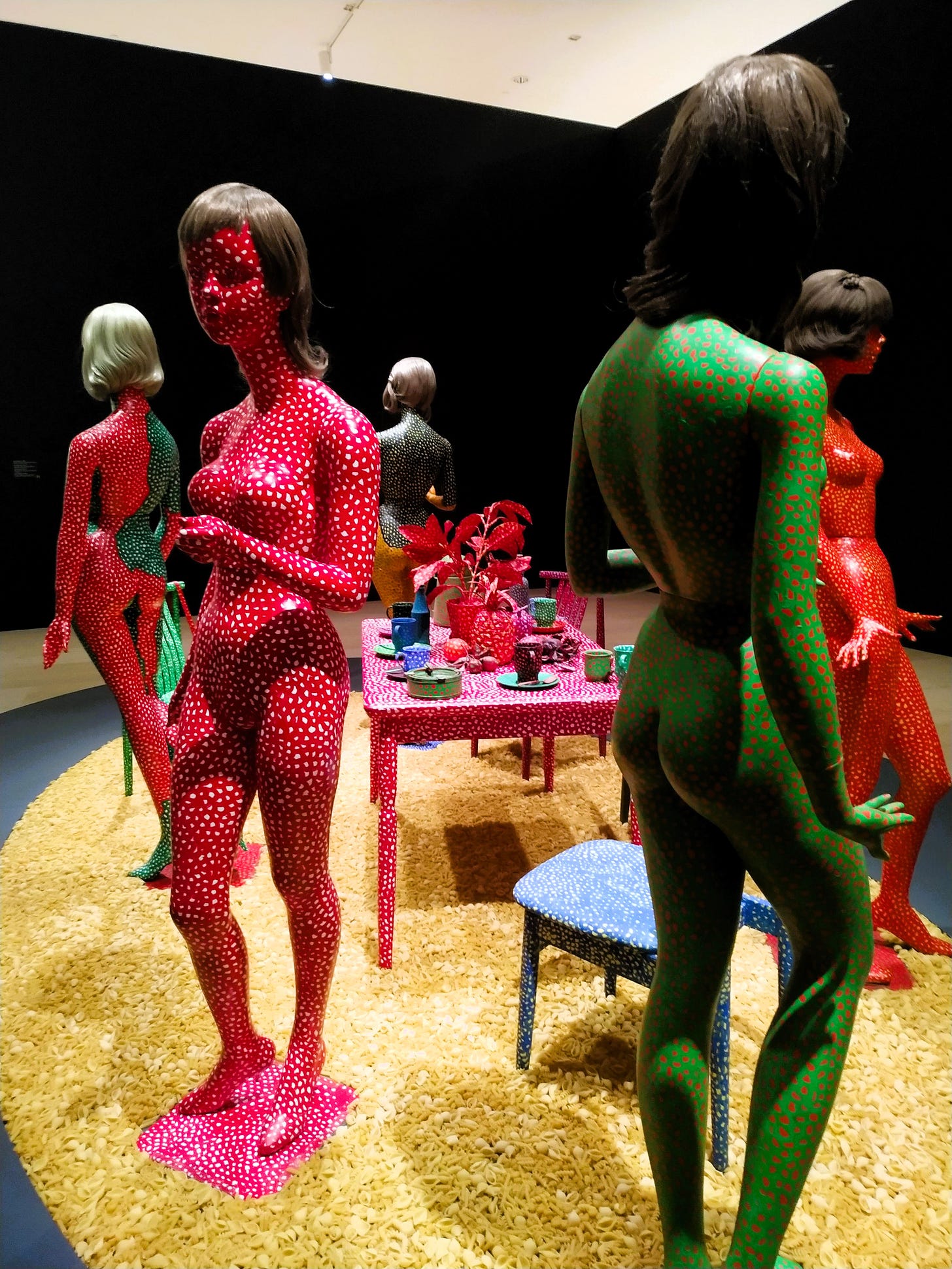
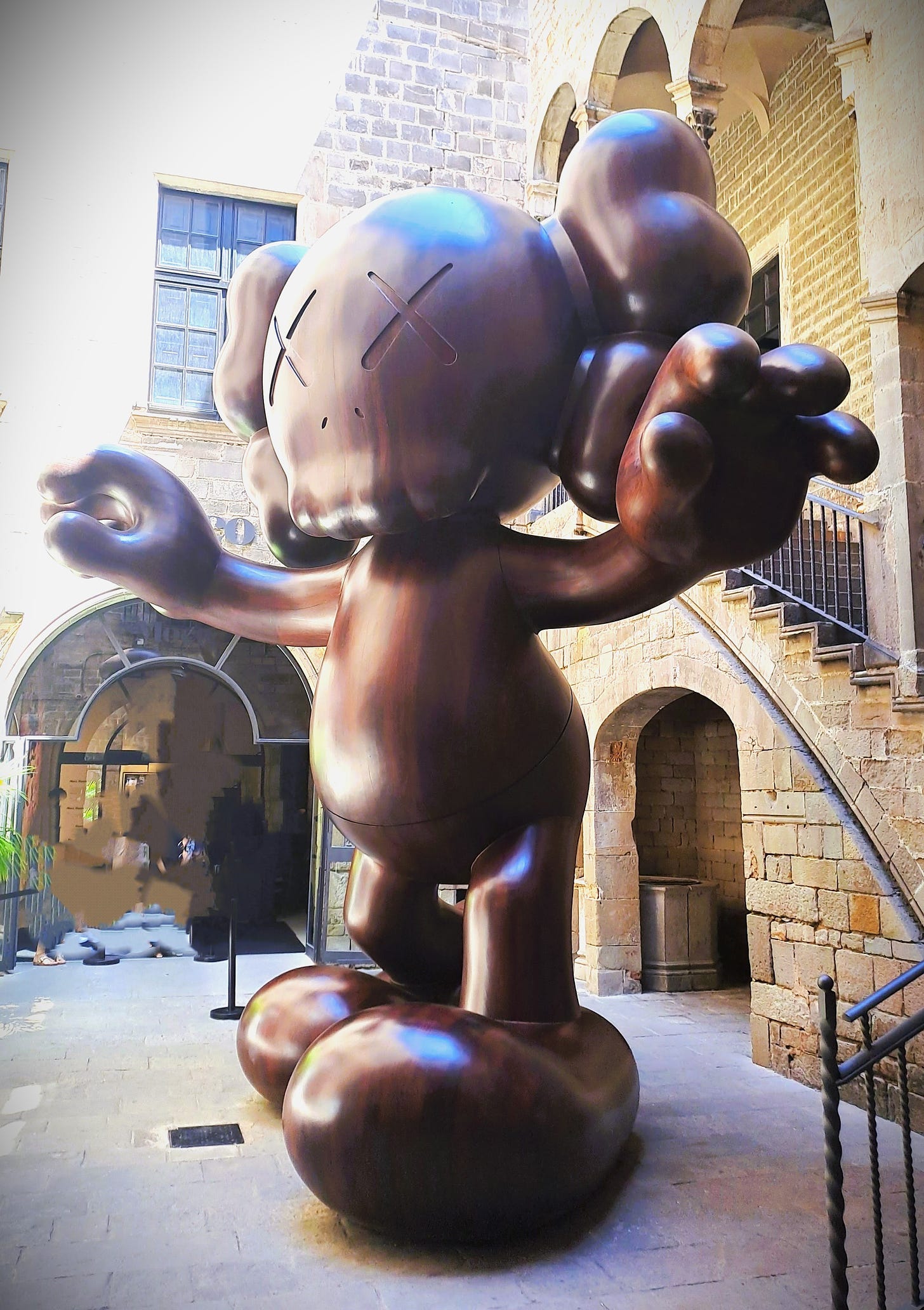
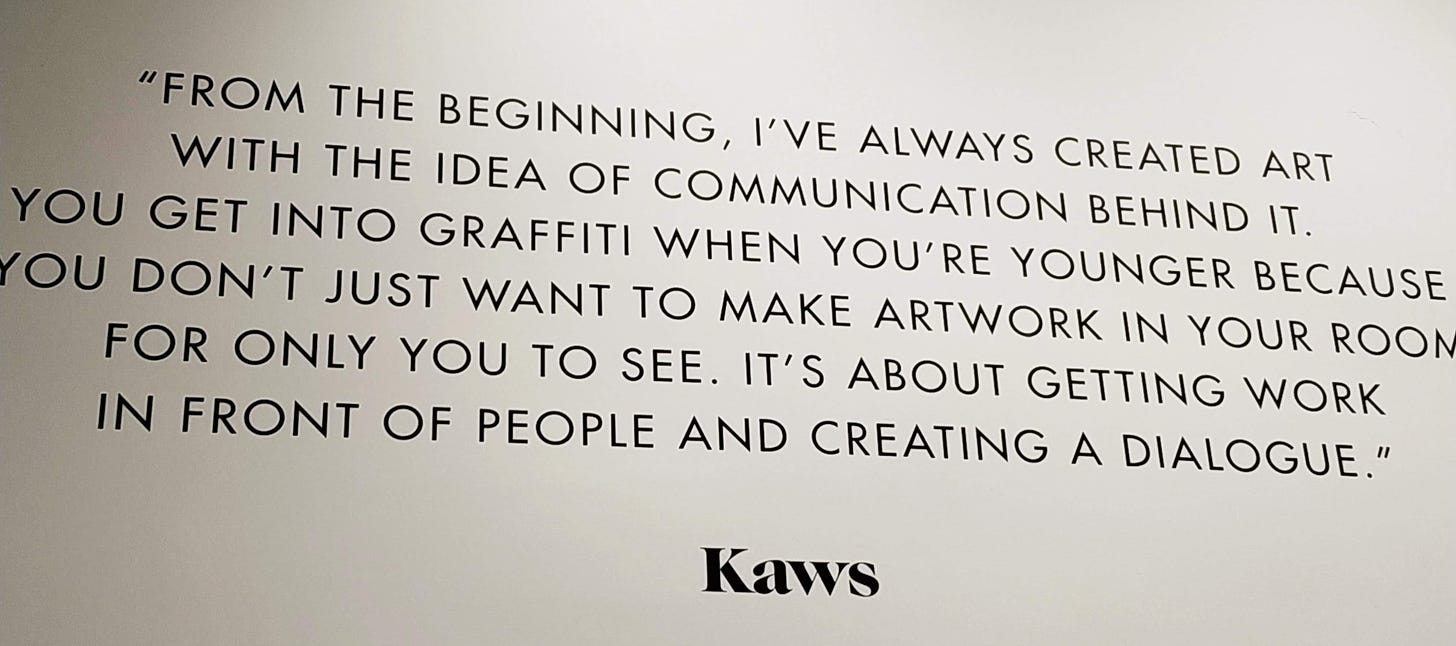
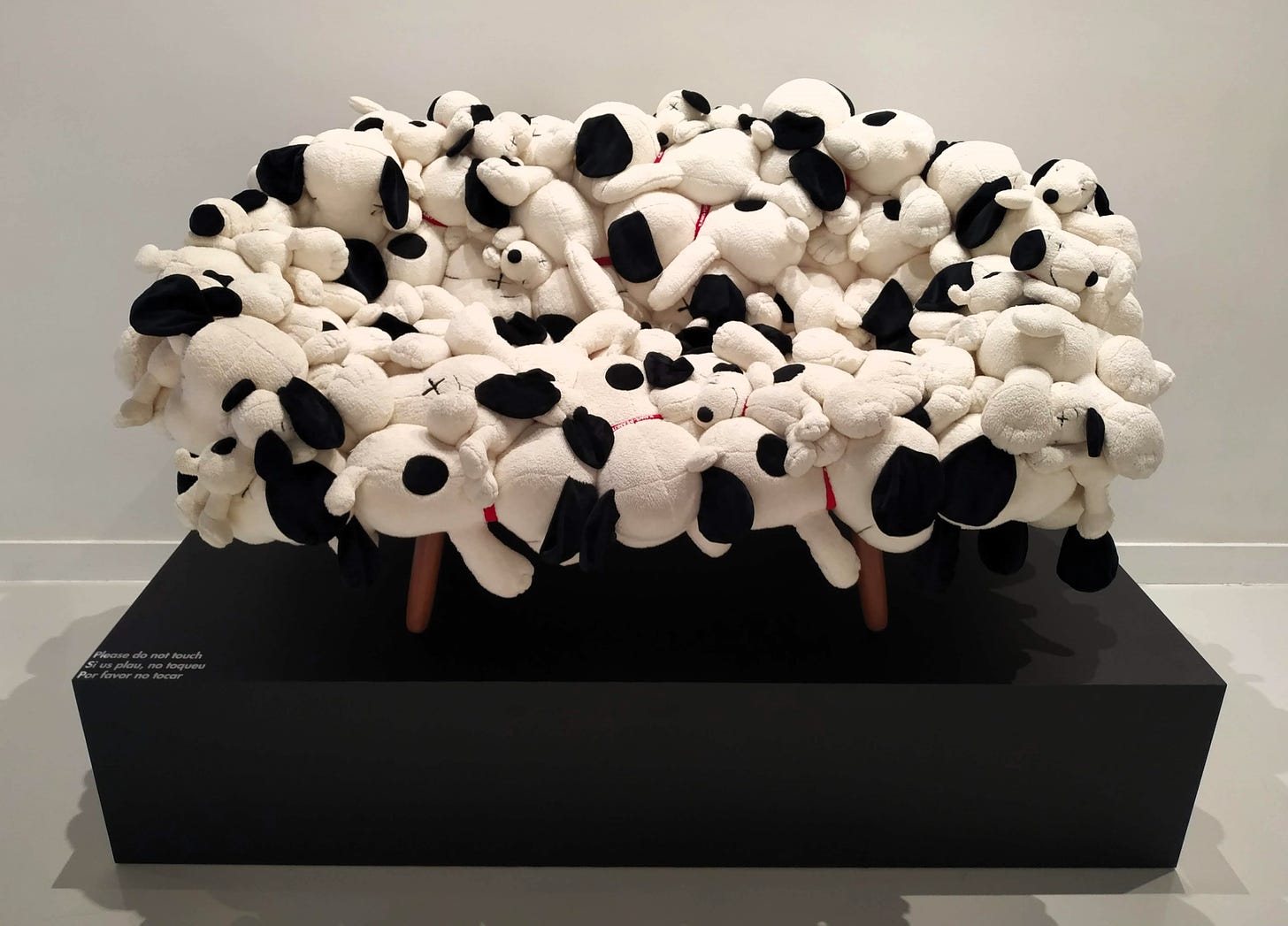
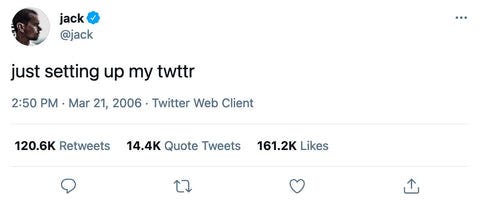
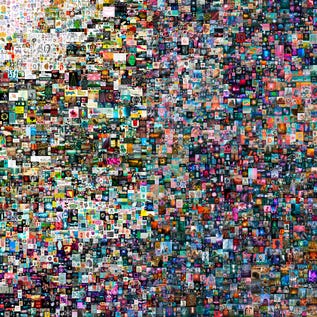
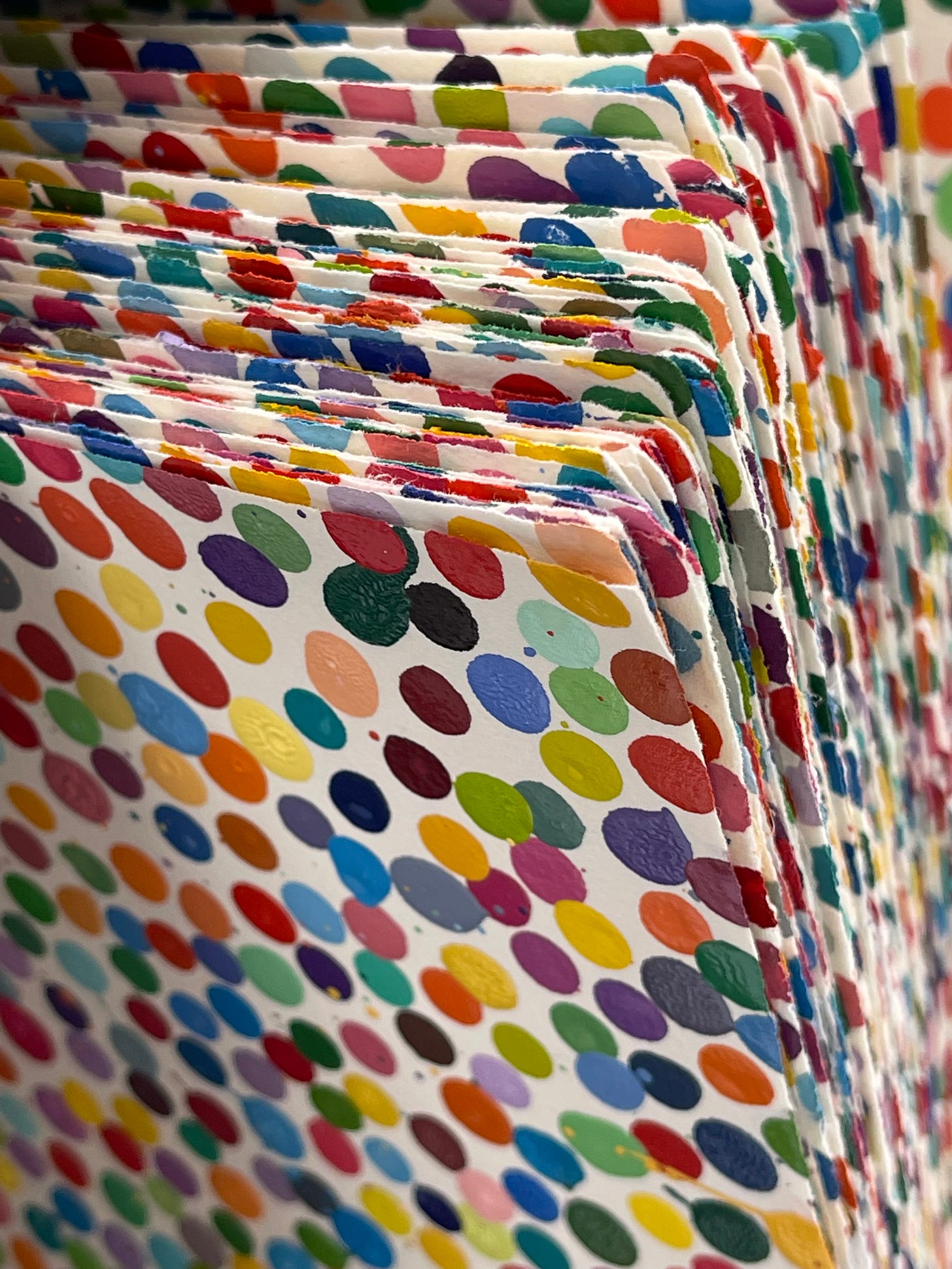
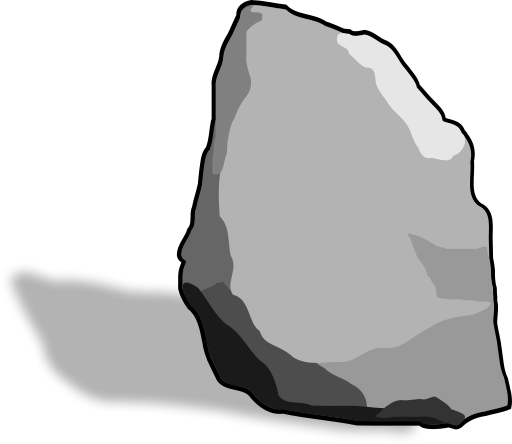
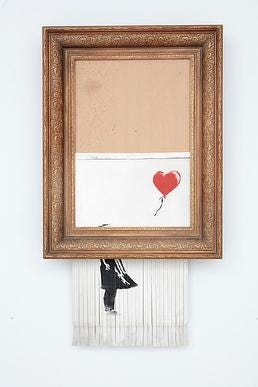
Dear Troy, happy belated birthday, dear friend! May you be well, happy, full of abundance and joy, inspired, curious as ever, hilarious--that won't ever change.
The only art I get and appreciate are Ancient Greek statues of naked people, and Renaissance paintings also of naked people. They hold beauty and timelessness and value that money can't buy.
And the rich can buy all the digital rocks they want, seems like they have money growing out of their butts and don't know what to do with it (well, they could donate it to us lol).
I will most likely be there with you!
A joy of a read as always, many a laugh elicited at the dialogue 😅
I remain somewhat baffled by NFTs. Doubly so when I read of the exploits of Hirst's The Currency. Just madness. Is he just seeing how far he can push ridiculousness of people? Is that the art of it? 🤷♂️
If you're ever in Hobart in Tasmania then definitely visit MOMA there. (if you haven't ever been of course.) A wild place of modern art that's well worth a trip.